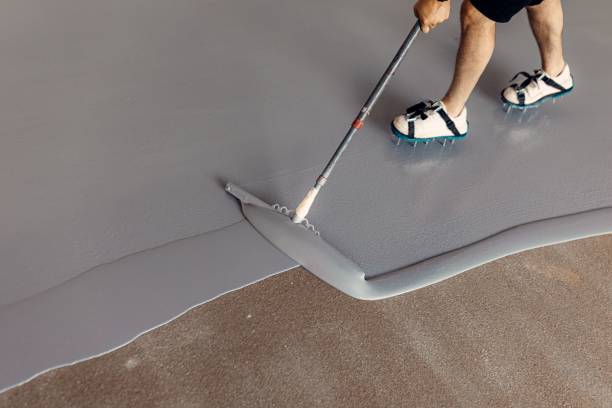How are Roofing Materials Evolving to Meet Aesthetic and Functional Needs of Homeowners?
Roofing design is undergoing monumental transformation as consumers seek home exteriors that appear fresher, more modern, and more stylish. Advancements in roofing materials and design are making roofs more aesthetic, sustainable, and high-performance. Modern residential spaces demand roofing solutions that are not only aesthetic but also smart and eco-friendly. As a result, the market is witnessing a shift to durable and sustainable alternatives.
Driven by continuous residential expansion, particularly in the rapidly developing urban areas of Asia Pacific, the market for roofing materials is projected to be worth USD 112.47 billion by 2029, says Fortune Business Insights™. The market is estimated to grow at a CAGR of 3.4% between 2022 and 2029.
Owens Corning, Johns Manville, Carlisle Companies Incorporated, Atlas Roofing Corporation, BMI Group, CertainTeed Corporation, GAF, IKO Industries Ltd., Carlisle Companies Incorporated, TAMKO Building Products, Inc., and Firestone Building Products Company are a few notable names in the business.
Bituminous Shingles are Fast Emerging as the Preferred Roofing Solution
Bituminous shingles are by far one of the most dependable and highly sought-after roofing options available in the market. This is primarily because they are quite durable, pocket-friendly, and fast and relatively easy to install. They can adapt to nearly any weather condition and can withstand extreme weather. One of the best features of bituminous shingles is that they are available in an array of color choices. To try new trendy looks, a large number of homeowners are experimenting with color, texture, and finish. Availability of a wide range of unique options to choose from is surging the demand and popularity of bituminous shingles among homeowners.
Bituminous shingles are typically coated with asphalt and then covered with colored mineral granules that serve as protective layers for shingles. These shingles are available in a range of grades and thicknesses. Typically, this type of roofing lasts from 25 to 30 years, making it highly affordable in the long run. A major advantage of bituminous shingles is that they reflect solar heat instead of absorbing it. As a result, the building structure remains much cooler without the installation of a heating or cooling system. Their ability to resist fire and avoid fire-related disasters makes them a top choice among homeowners.
The roofing materials industry players are continuously rolling out new products in the market. Highlighting a recent instance, in February 2022, Johns Manville, a Berkshire Hathaway company, rolled out two new bituminous roofing systems that help enhance roofing productivity.
Developing Asia Pacific Countries Continue to Present New Growth Opportunities
The market in Asia Pacific captured a revenue share worth USD 32.03 billion in 2021. Rapid urbanization, population growth, and continuous residential expansion are fueling new investments in the regional construction sector. According to the Asian Development Bank (ADB), developing APAC countries require an investment worth nearly USD 1.7 trillion per year through 2030 to maintain their current growth momentum. Growing construction spending to keep pace with the evolving infrastructure needs will certainly create a strong need for new roofing solutions.
With increased disposable incomes, consumers are willing to spend excessively on the aesthetics of their homes. To meet the evolving needs of customers, roofing materials suppliers are constantly innovating, leading to a greater variety of options for consumers to choose from. This, in turn, is leading to increased competition in the market, which will augment the regional growth significantly.
COVID-19 Pandemic Posed Several Roadblocks for Roofing Materials Suppliers
The COVID-19 pandemic brought the global construction sector to a standstill, with major projects being delayed and many upcoming ones canceled altogether. Lockdowns and travel restrictions imposed by the respective governments shook the entire construction materials supply chain. Resulting supply chain disruptions, production delays, and workforce shortages created several new challenges for the market players.
One of the major consequences of construction materials shortages was the severe fluctuation in prices. The National Roofing Contractors Association reports a massive spike in building & construction materials prices during the pandemic. While delays in construction projects affected the market growth, diminished consumer demand for residential renovation and upgrades also impacted the growth prospects. However, post-COVID-19, the market for roofing materials is set to recover and gain momentum.
The Future of Roofing is Eco-friendly and Sustainable
Among all emerging trends, heightened focus on eco-friendly and sustainable materials remains one of the most anticipated trends in roofing design. With a large number of people becoming mindful of their carbon footprint, the demand for greener solutions that still look classic, elegant, and trendy is on the rise. Roofing materials suppliers are experimenting with recycled and synthetic materials, which could well dictate the future of the roofing materials industry over the course of the next few years.
About the author:
Hrishikesh Kadam is a graduate in Electronics & Telecommunication Engineering and is passionate about penning down quality content for a range of domains. Besides writing, he enjoys Netflix, good music, and working out.






